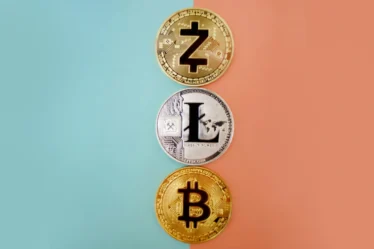
Cryptocurrencies have made a profound impact on the global financial system, and India is no exception. While India’s relationship with digital currencies like Bitcoin, Ethereum, and JioCoin has been complex, it has evolved dramatically over the past decade. From regulatory uncertainty to the potential of a digital rupee, the journey of cryptocurrencies in India has been a fascinating one.
In this blog, we will explore the evolution of cryptocurrencies in India, the challenges faced, and what the future may hold for crypto enthusiasts and investors in the country.
1. The Initial Hype: Cryptocurrencies Enter India
Cryptocurrencies made their debut in India in the early 2010s, with Bitcoin leading the way. At first, digital currencies were seen as a revolutionary financial technology, offering decentralized alternatives to traditional banking and fiat currencies. Enthusiasts in India started to experiment with Bitcoin mining and trading, with crypto exchanges like ZebPay and CoinDCX emerging as early players.
Key Events:
- 2013: Bitcoin first gained significant attention in India. Early adopters began buying and selling Bitcoin as a speculative investment.
- 2014: ZebPay, one of India’s first crypto exchanges, launched, marking the start of more structured crypto trading in India.
2. The Government’s Response: Uncertainty and Ban
In 2017, cryptocurrencies began to gain mainstream popularity in India, prompting the government and the Reserve Bank of India (RBI) to take a closer look at the burgeoning market. As the number of crypto users grew, so did the concerns about fraud, money laundering, and terrorist financing. The Indian government issued multiple warnings regarding the risks of trading in cryptocurrencies.
Key Events:
- 2018: The RBI imposed a banking ban on cryptocurrency-related transactions, effectively stalling the growth of crypto exchanges and businesses in India. This decision led to a sharp decline in the value of digital currencies in the Indian market.
- 2019-2020: Despite the ban, a growing number of crypto enthusiasts and traders found ways to continue using and trading digital currencies through peer-to-peer (P2P) exchanges.
3. The Supreme Court’s Historic Verdict: A Turning Point
In 2020, after years of legal battles, the Indian Supreme Court delivered a historic judgment. It ruled that the RBI’s banking ban on cryptocurrency transactions was unconstitutional, effectively lifting the ban and allowing cryptocurrency businesses to resume operations. This was a major turning point for the Indian crypto market.
The ruling was a significant win for the crypto community, offering hope to investors and businesses that the Indian government might eventually regulate rather than outright ban digital currencies.
Key Events:
- March 2020: The Indian Supreme Court lifted the RBI’s banking ban on cryptocurrencies, giving a major boost to the industry.
- Crypto Exchanges Flourish: After the ruling, platforms like WazirX, CoinDCX, and Bitbns saw a surge in users, signaling a renewed interest in digital currencies.
4. Crypto Regulation and Taxation: The Road to Clarity
Although cryptocurrencies are no longer banned in India, the legal status of digital currencies remains a gray area. The government has yet to introduce clear regulations surrounding cryptocurrency trading, leading to uncertainty among investors. However, in recent years, the Indian government has been working towards introducing regulations that could bring more clarity to the market.
In 2021, there were talks of introducing a Cryptocurrency Bill that could regulate the industry. While the bill was delayed, there has been increasing pressure on the government to act. At the same time, crypto taxation has become an important issue, with the Indian government exploring ways to tax digital asset transactions.
Key Events:
- 2021: The Indian government considered regulating the crypto market, including proposals for crypto taxation.
- 2022: India’s Finance Minister, Nirmala Sitharaman, announced that cryptocurrency earnings would be taxed at 30%, signaling the government’s intent to regulate the market.
5. The Rise of Indian Crypto Projects: JioCoin and Beyond
While India’s regulatory stance on cryptocurrencies remains in development, there has been a rise in Indian crypto projects. One notable example is JioCoin, a digital currency designed by Reliance Jio, one of India’s largest telecommunications companies. Though not a cryptocurrency in the traditional sense, JioCoin has generated significant buzz for its potential to reshape the digital payment landscape in India.
Key Events:
- JioCoin: Designed by Reliance Jio, JioCoin is expected to introduce a new wave of blockchain-based innovations in India, though it is distinct from traditional cryptocurrencies like Bitcoin.
- Pi Network: Another notable project is Pi Coin, which has gained popularity among Indian users as a new form of digital currency with the promise of democratizing cryptocurrency mining.
6. What’s Next for Cryptocurrencies in India?
The future of cryptocurrencies in India is uncertain but promising. As the government continues to examine ways to regulate the market, India remains a crucial player in the global crypto ecosystem. With the introduction of crypto taxation and ongoing discussions about a digital rupee, India is on the verge of establishing a clear regulatory framework for cryptocurrencies.
Possible Developments:
- Digital Rupee: The Reserve Bank of India (RBI) is exploring the possibility of launching a Central Bank Digital Currency (CBDC), also known as the digital rupee. This could transform the digital payments landscape in India and integrate blockchain technology into the country’s financial system.
- Clear Regulations: As more people become aware of the potential benefits of cryptocurrencies, India is expected to finalize its regulatory stance, creating a safe and secure environment for investors and businesses.
Conclusion: The Bright Future of Cryptocurrencies in India
The journey of cryptocurrencies in India has been full of challenges and triumphs, but it has also shown immense potential. From the initial enthusiasm and speculative investments to the legal battles and eventual victories, India’s crypto story continues to unfold.
As India’s regulatory environment evolves and more blockchain-based projects like JioCoin and Pi Coin emerge, the future of cryptocurrencies in India looks promising. However, it’s crucial for investors to stay informed, exercise caution, and continue to monitor changes in legislation as the market continues to grow.


